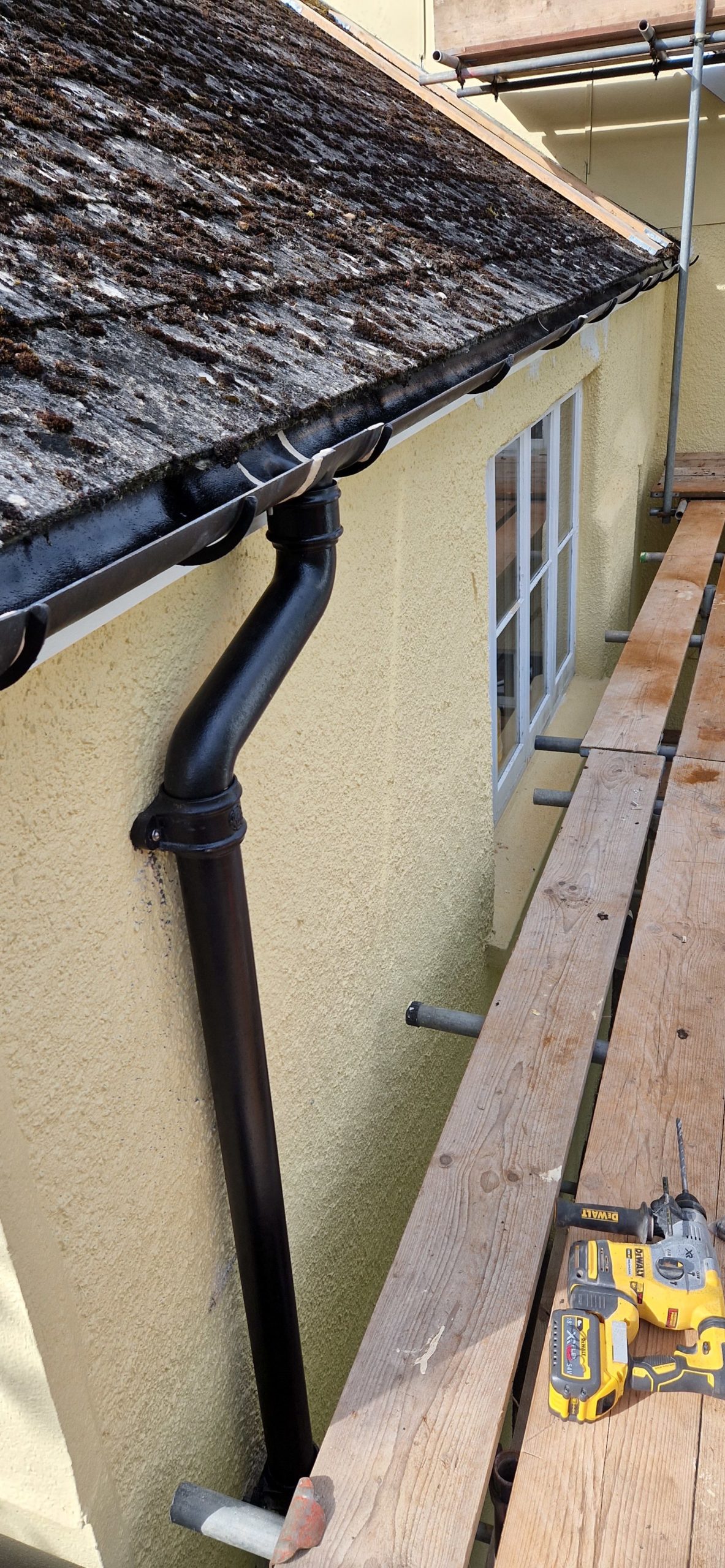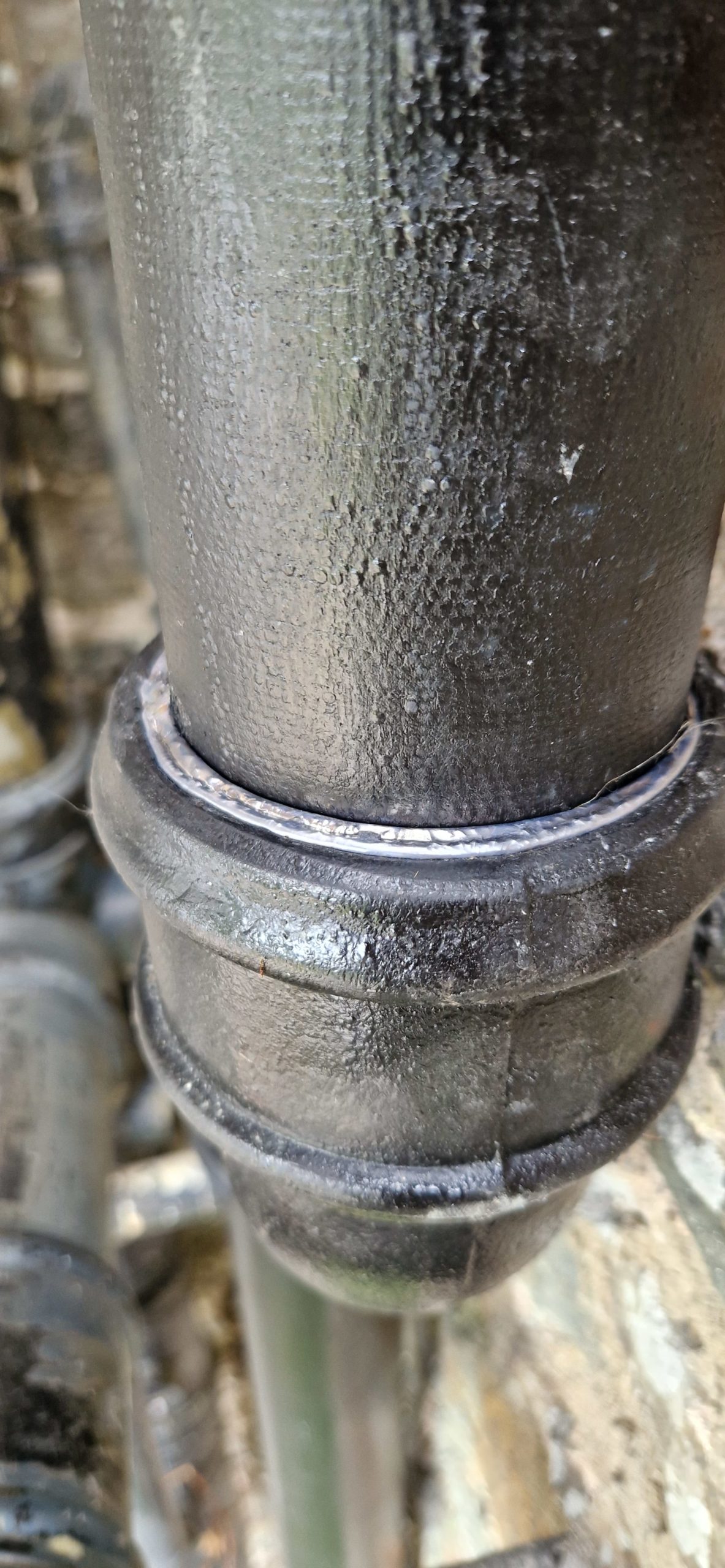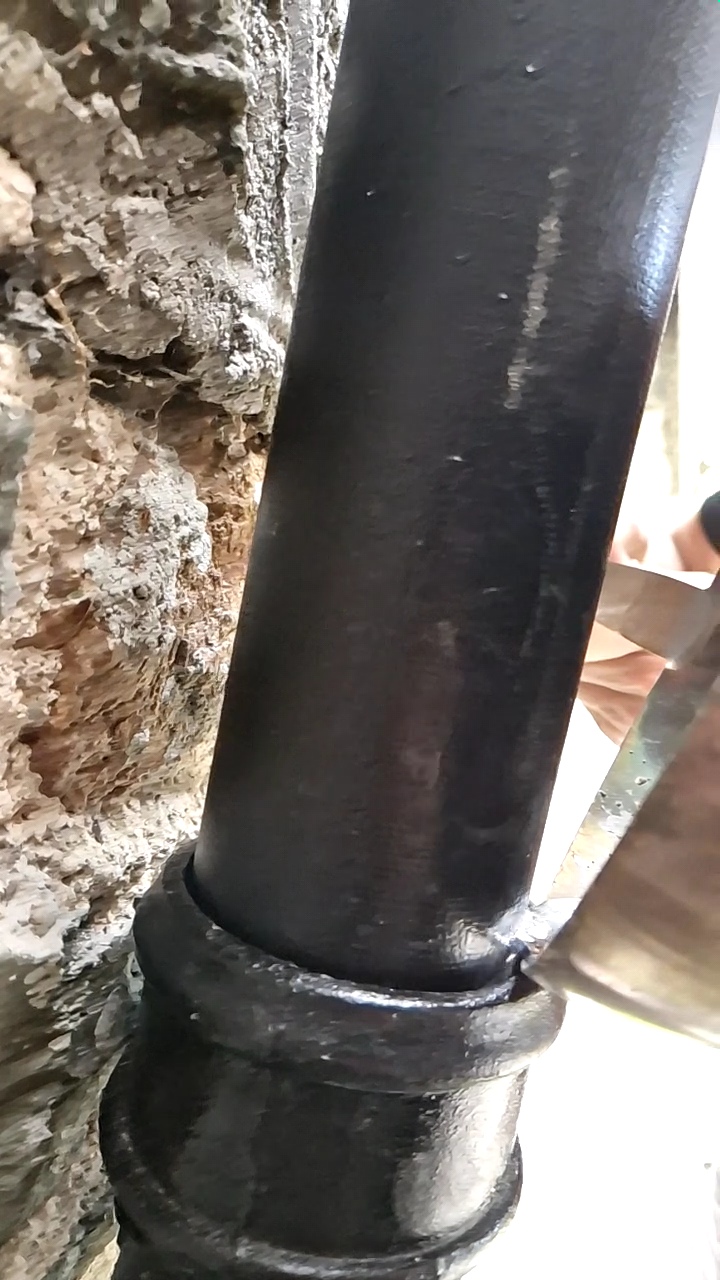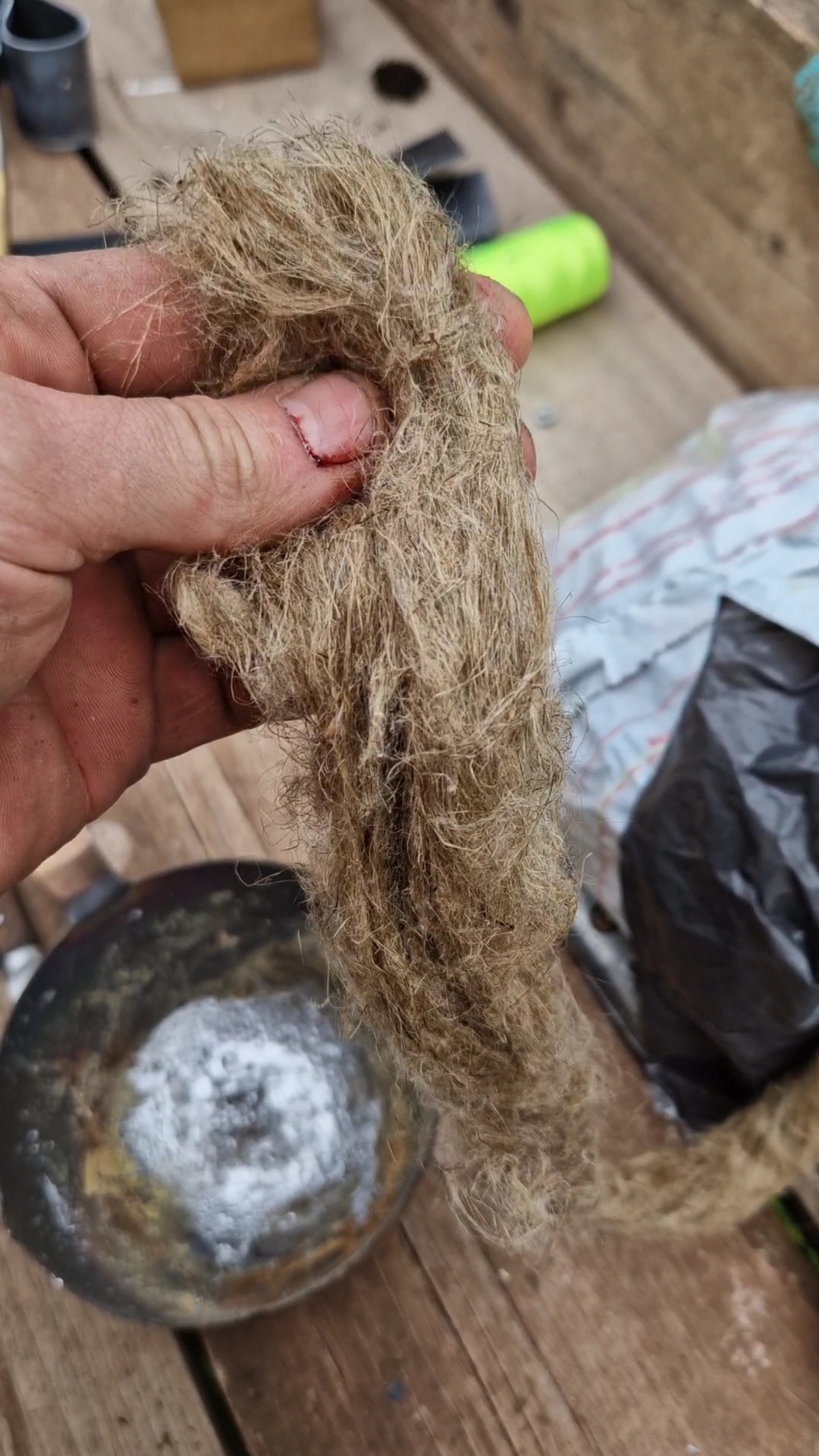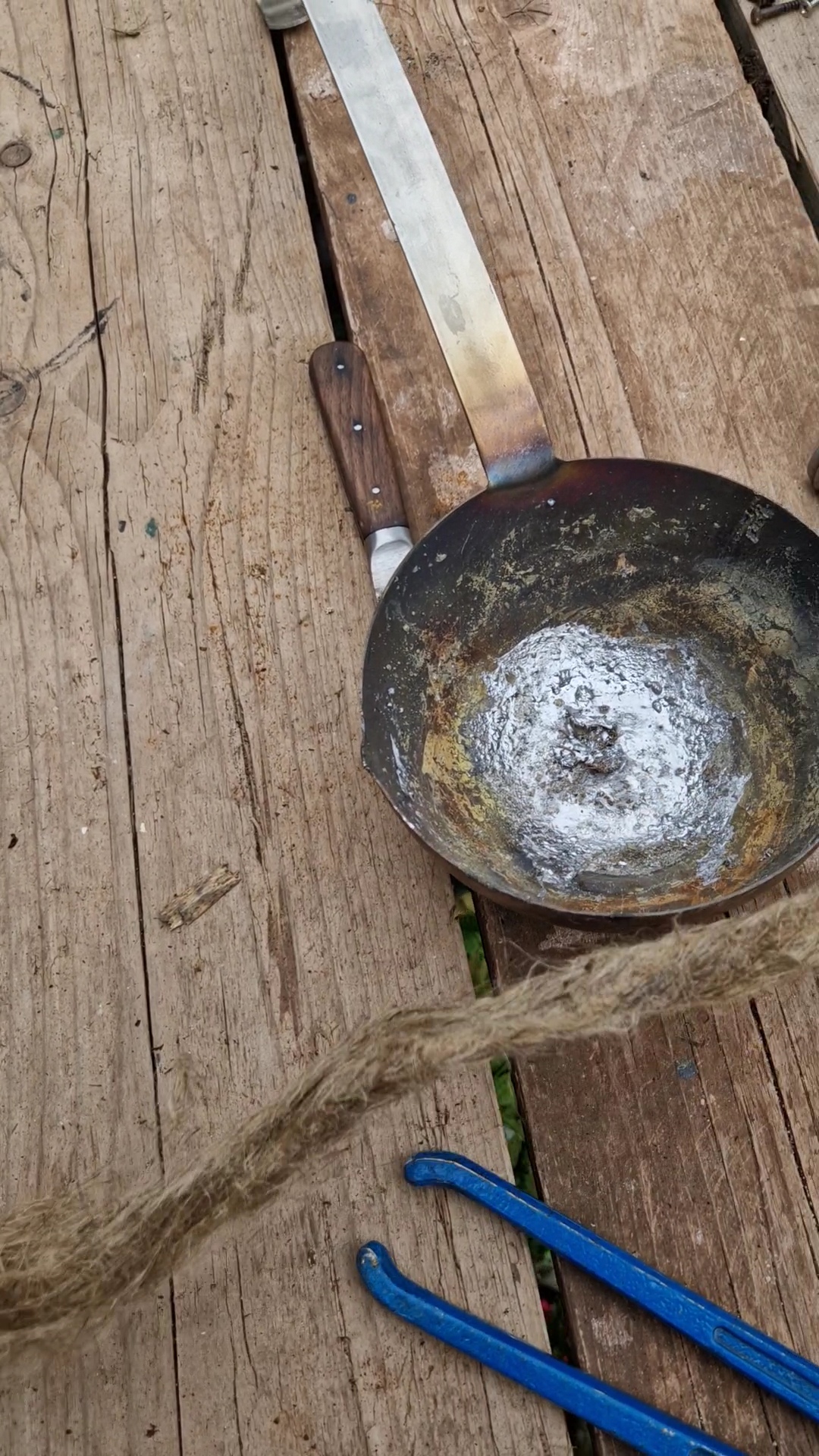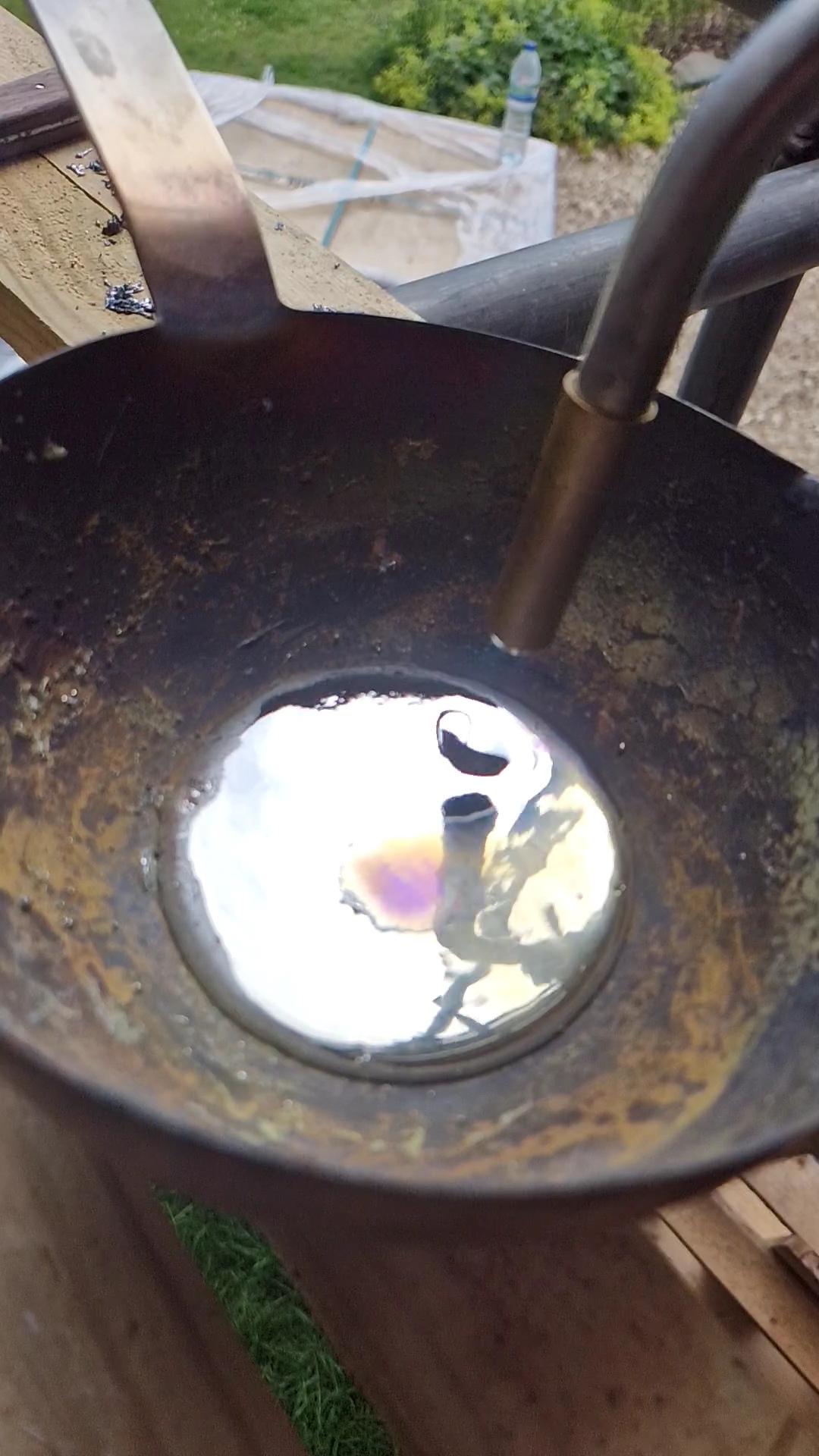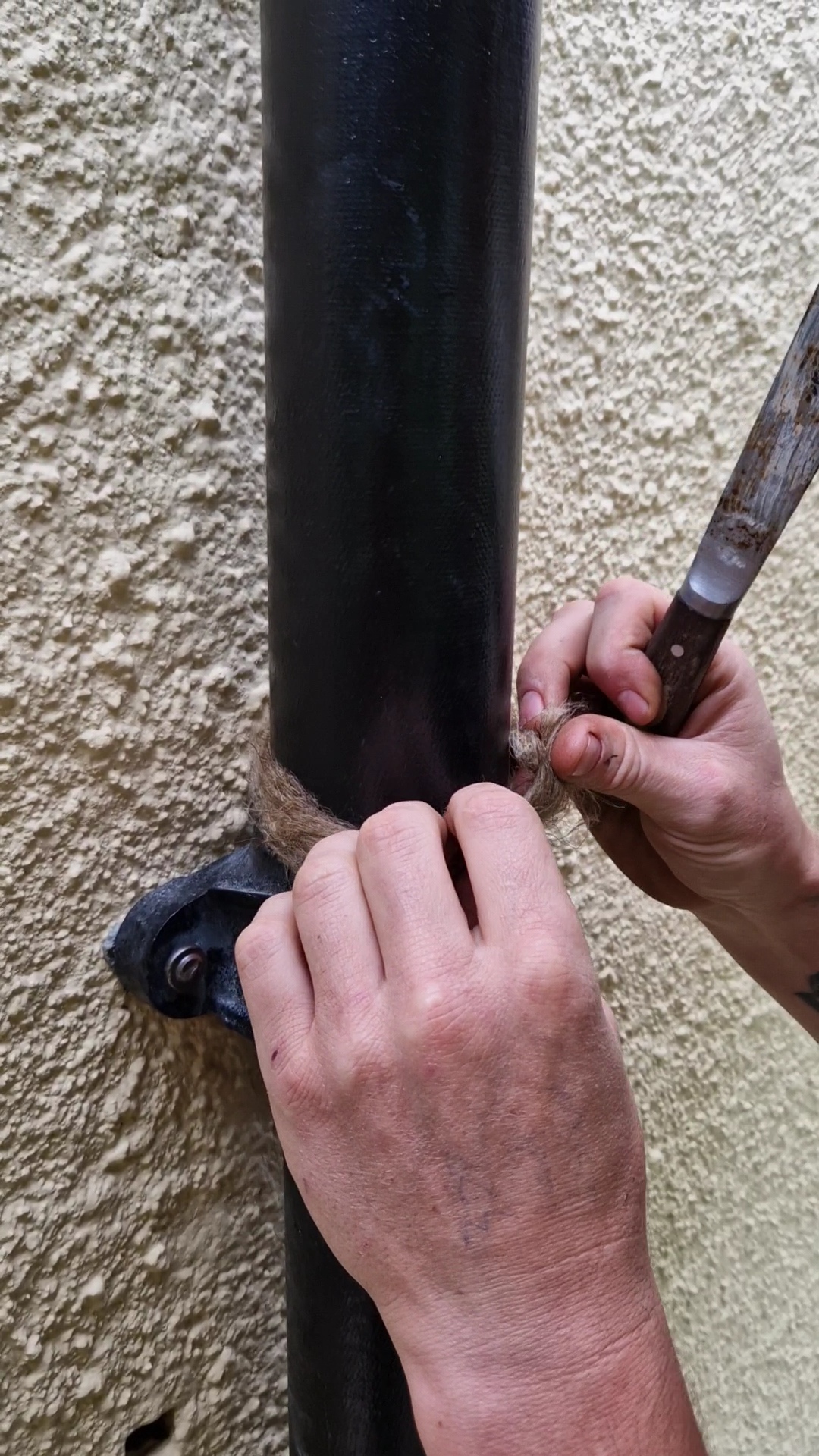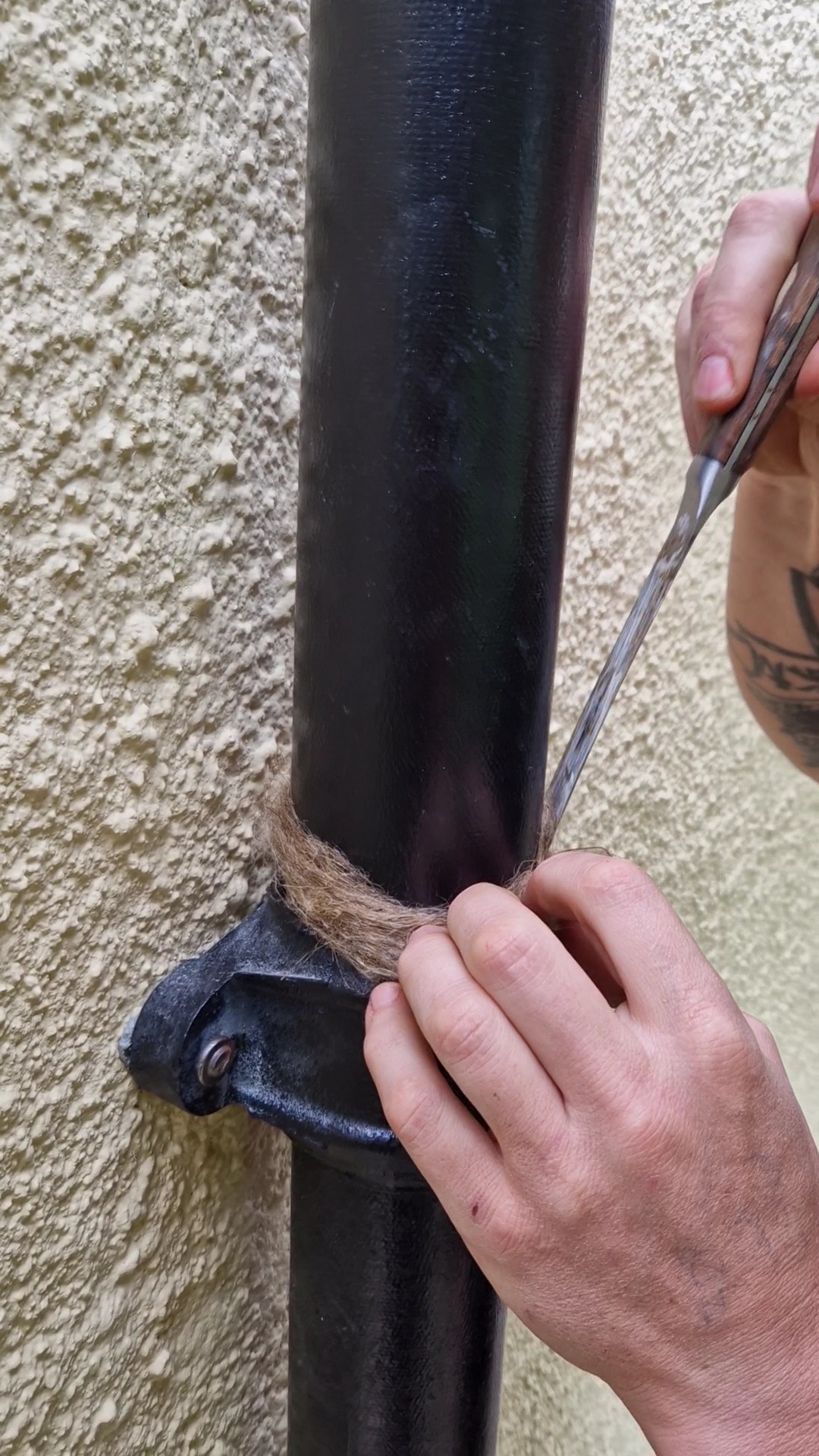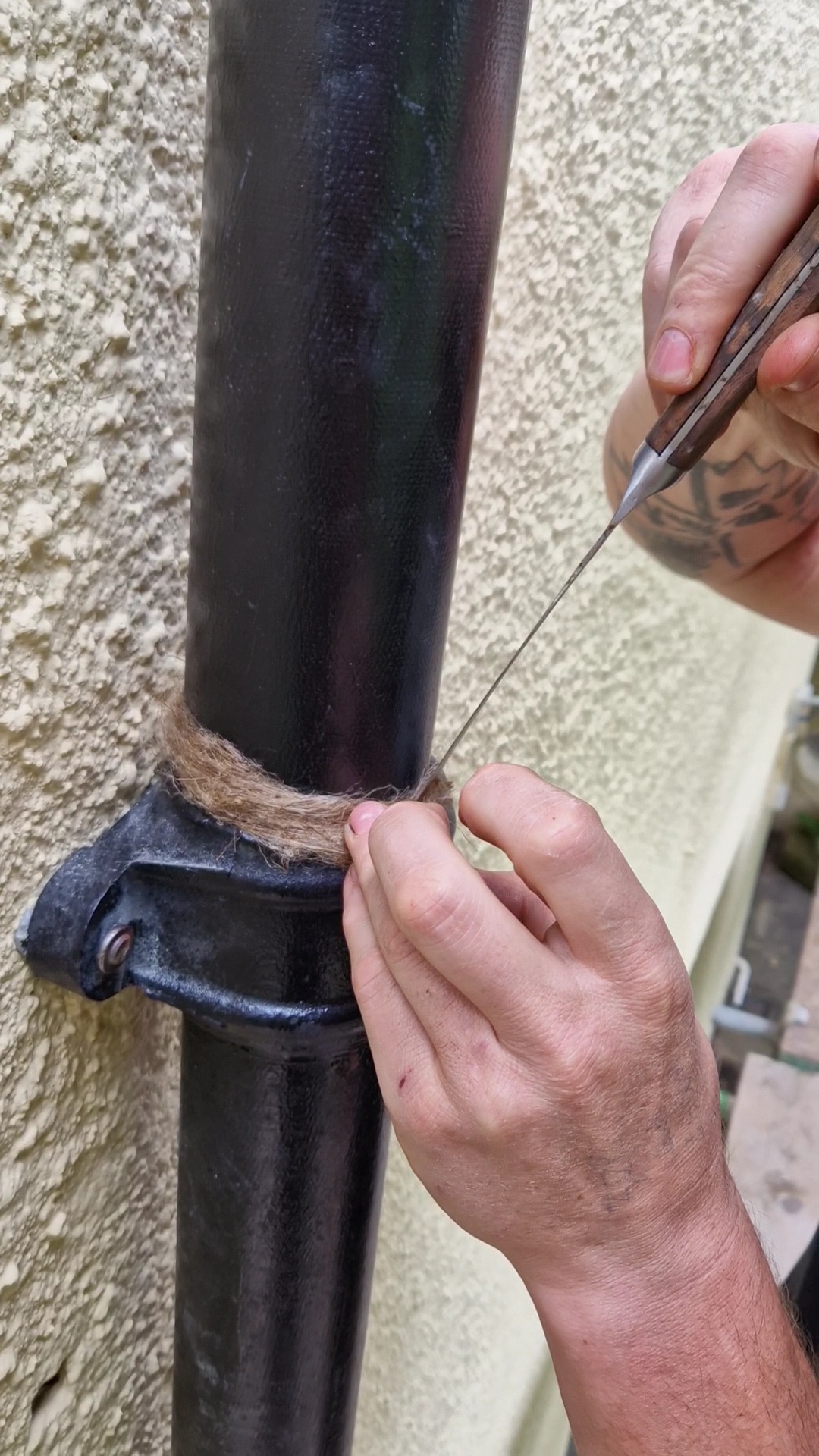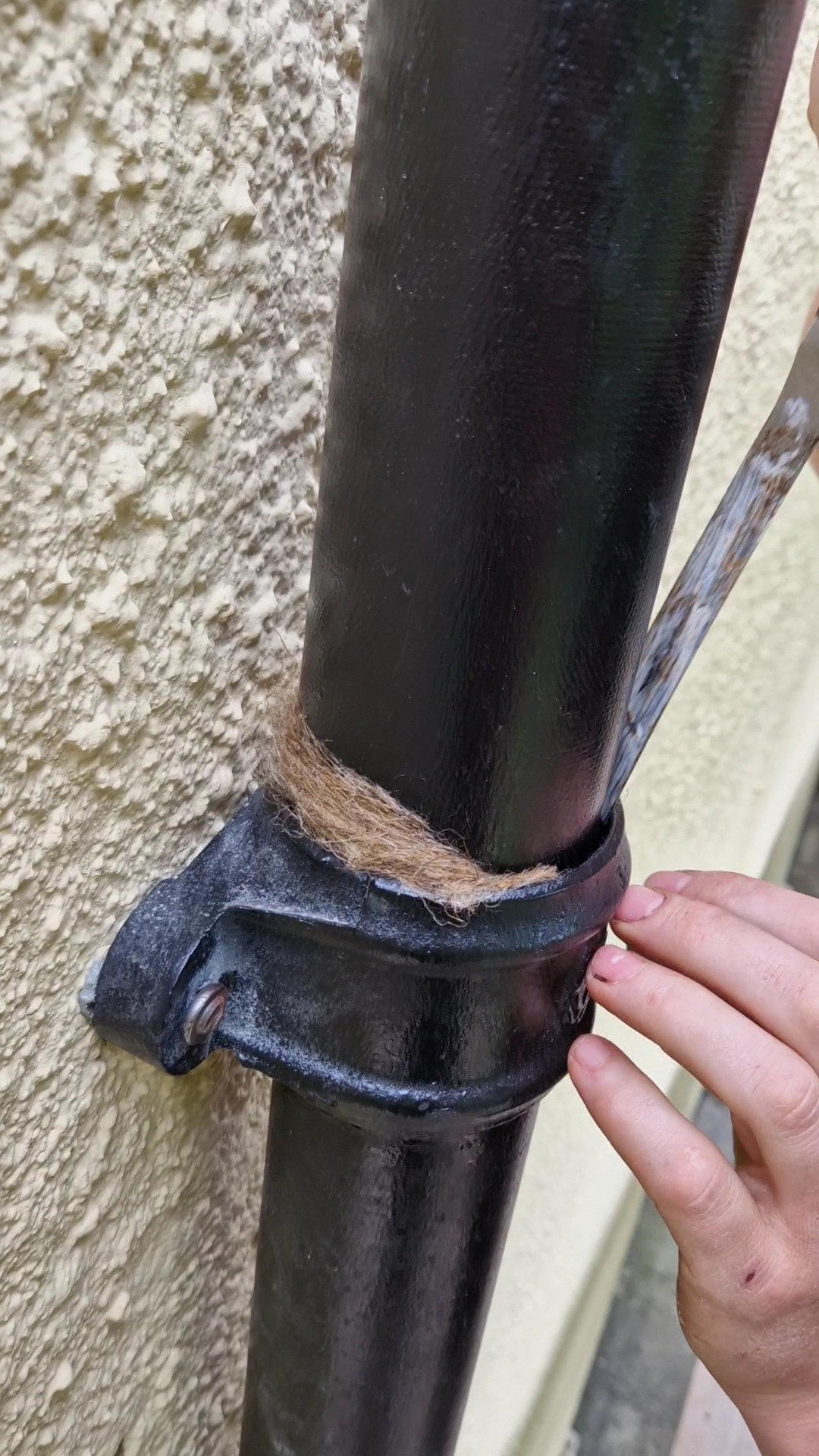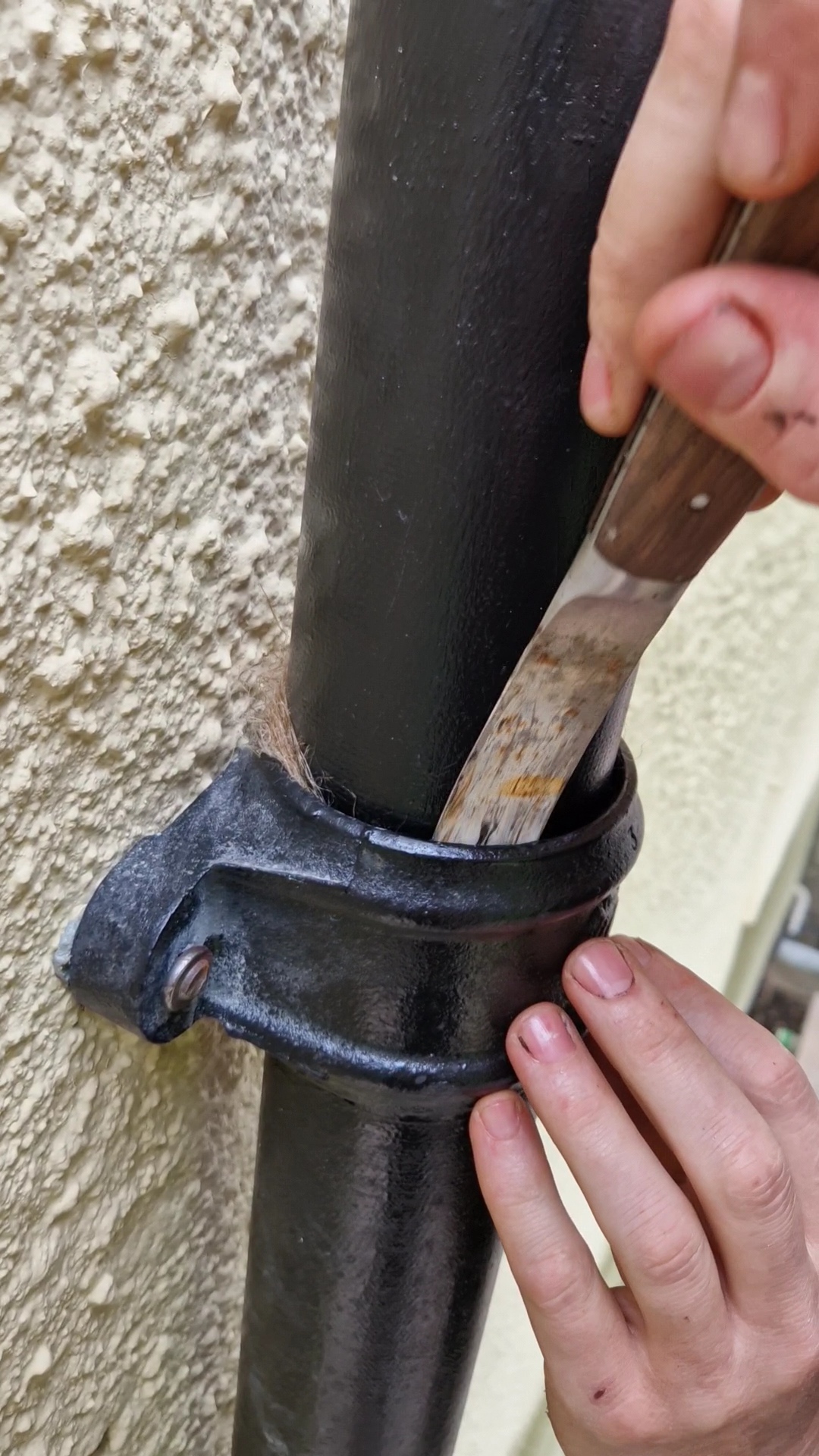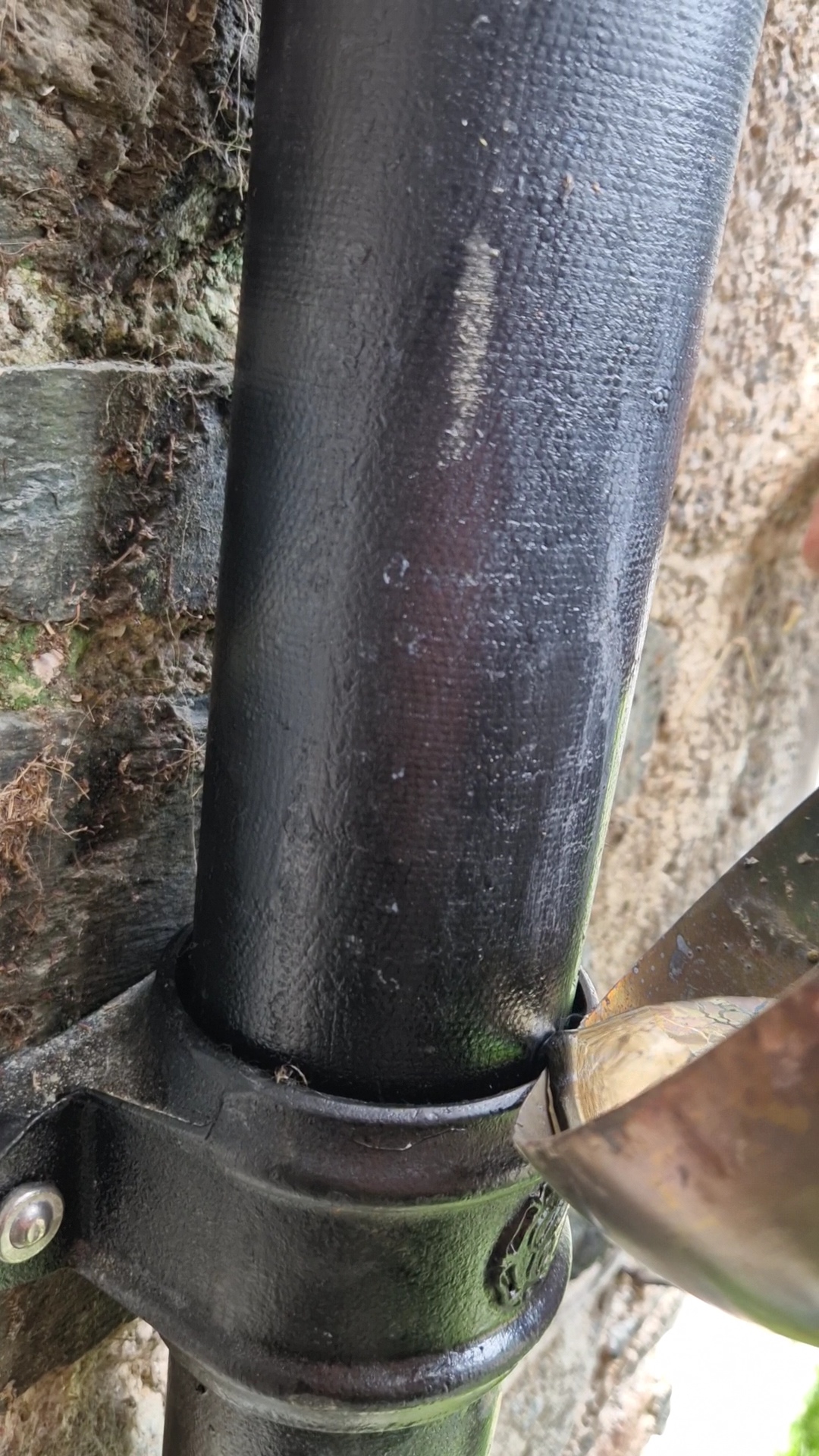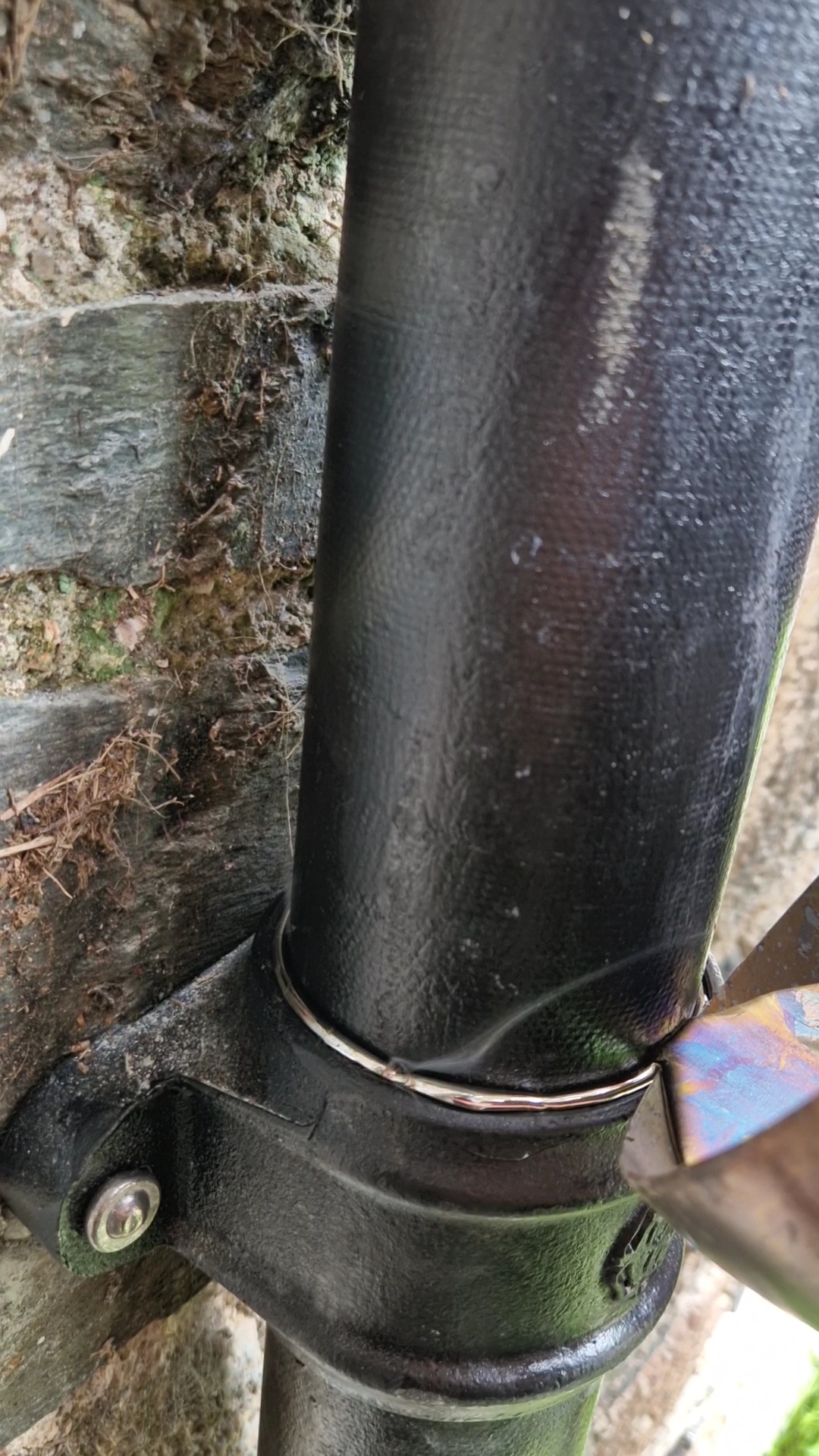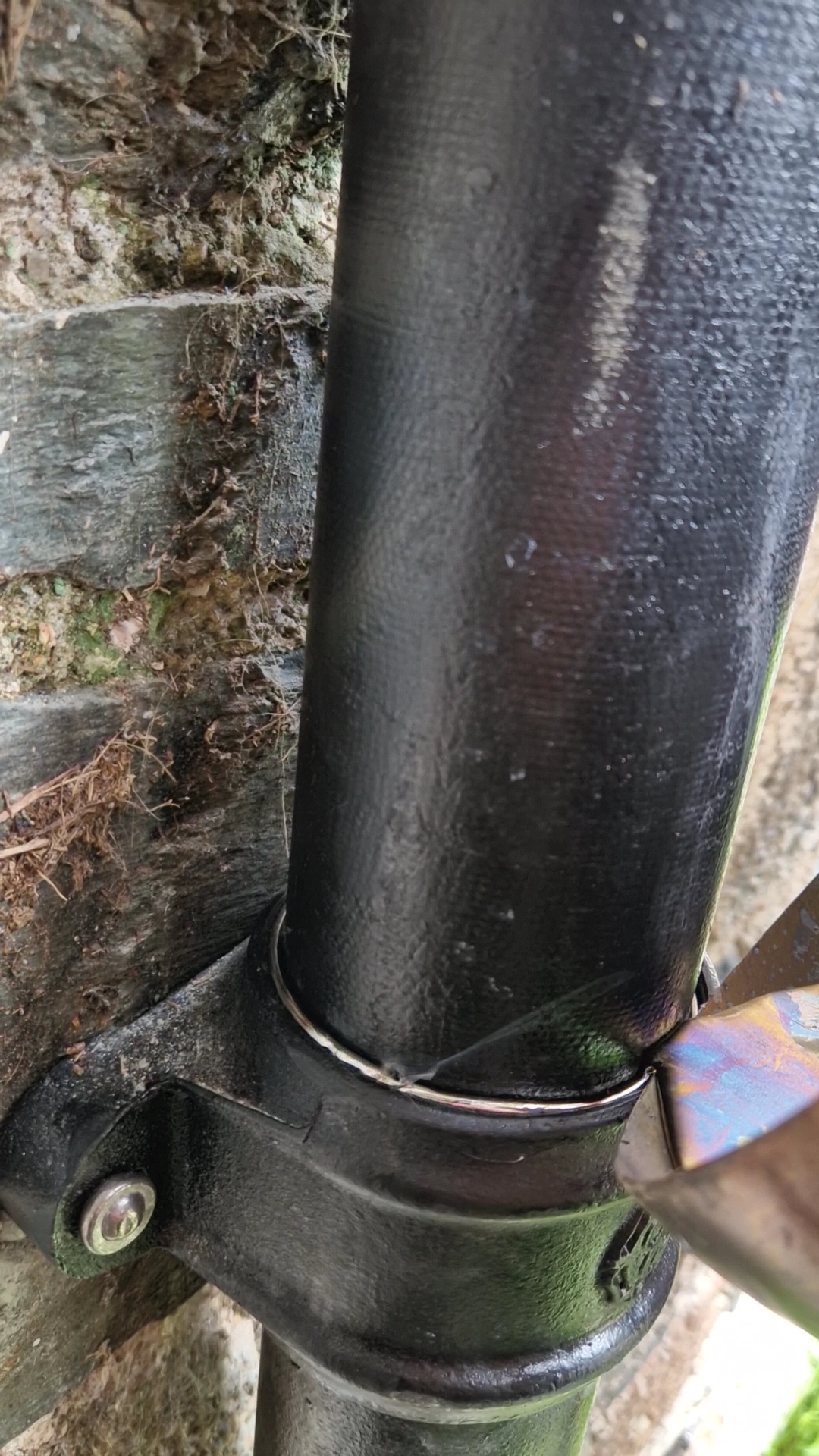There have been several times in my career that I’ve learned an old methodology that is superior to the new ones or the ones I was currently using. The most recent not only feels like an all-around better way, but it’s also just a lot more fun.
Sealing up cast iron down pipes and soil pipes is the topic at hand. Over the years I’ve used putty and sealant but recently came across a plumbers manual over 100 years old. There’s an illustration in the said manual explaining how to safely and correctly pour molten lead into the sockets. The illustration is not only captivating for someone like me but also rather comical.
After a touch more research on how exactly this methodology works, it was time to go shopping and prepare for a day of learning on the job.
Here goes:
Cut oakum rope (flax fibres drenched in pine tar) to the circumference of your pipe with an additional 30mm to overlap.
Wrap the rope around your pipe and wedge it down with a flexible 25mm putty knife. Make sure the rope is well compressed at the bottom of the socket. This will create a nice bed for the lead to pour onto.
Safely and carefully heat lead in a large spouted ladle to 400 degrees Celsius or until it starts to go green and/or purple. Scrape all the impurities (slag) from the top skin, then slowly pour into your socket. Pour until full but slow down towards the end to keep from overspilling.
The lead will solidify in a matter of seconds but the pipe will remain hot to the touch for a few minutes after.
The seal on this is so superior because it fundamentally locks the two pipes together whilst moving well through the seasonal temperature changes without cracking or splitting. Not only is the performance of this methodology fantastic but it’s also considerably more environmentally friendly. All-natural materials and the lead of course can be fully recycled by the next generation of roofers.
This is one of the smartest old methodologies I have learned this year and I shall be keeping it up for all my future cast iron jobs, without question.
I would be inclined to allow for about 30 minutes of extra labour time for a 5-meter run of pipes.
